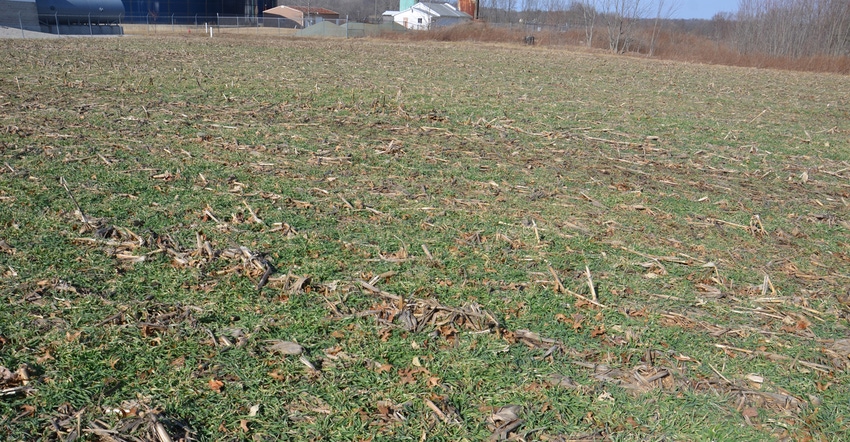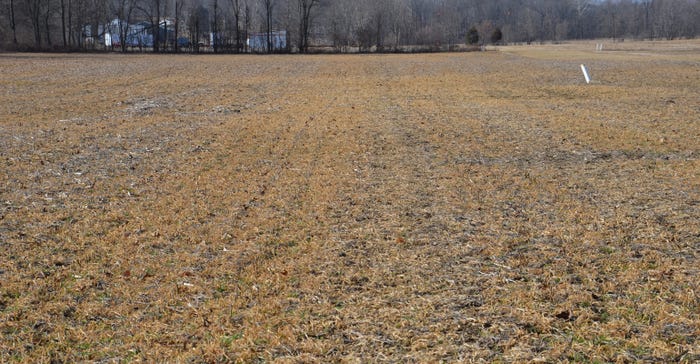
Which cover crops do Matthew and John Zupancic seed each year? It depends upon which cash crop they’re following and what crop will be there next season, Matthew says. He and his dad farm near Morgantown, Ind.
If you walk out to a field that was in soybeans in 2017, you’ll likely find young crimson clover plants coming up through brown residue left by oats. You may also find some small radishes growing in the field. Their preference is to seed a mixture of oats with crimson clover and perhaps radishes after soybean harvest. That provides a seedbed they prefer for corn in the spring.
The oats winterkill, some years sooner than in other years, Matthew says. That means they still get rooting action from oats that grew in the fall and have cover to prevent soil erosion for at least part of the winter. Yet since oats typically winterkill, there’s less residue to interfere with corn planting in the spring.
 CORN COMING: The cold snap in January took out the oats this year, John Zupancic says. Crimson clover is still present here, and should take off this spring. This field will be planted to corn.
CORN COMING: The cold snap in January took out the oats this year, John Zupancic says. Crimson clover is still present here, and should take off this spring. This field will be planted to corn.

Where they can establish crimson clover, it provides green growth ahead of planting. Other farmers who have tried this say they typically find that crimson clover can produce some nitrogen for the following corn crop. The longer they can let it grow, the more nitrogen they can expect. There often is a delay on when they get the nitrogen back, however. The clover must decay once it’s terminated so the nitrogen can cycle and be available for plants.
Before soybeans
Cereal rye’s fit on the Zupancic farm is typically following corn, Matthew says. If the field is in a corn-soybean rotation, then soybeans will follow the cereal rye cover crop.
This option is becoming a favorite for many no-tillers and cover-croppers around the state, experts say. Cereal rye is the one cover crop that seems to consistently provide help controlling weeds in the spring — especially marestail.
Bill Johnson, Purdue University Extension weed control specialist, says marestail doesn’t like competition. Even winter annual weeds compete with marestail in the fall. A successful cover crop of cereal rye can help hold back marestail, giving you a jump on weed control in soybeans in the spring.
If you walk any of the Zupancics’ fields this spring, you’ll still find crop residue from 2017 on the surface. They typically sow cover crops with a Valmar broadcast seeder mounted on a Salford vertical-tillage tool. You’ll find either a living cover crop or residue from a cover crop if it winterkilled. But you won’t find soil disturbance.
“We literally set the [tillage] tool just to scratch in the residue and move it around,” Matthew says. “We don’t want to disturb the soil. Just moving residue as we seed seems to typically result in a good stand.”
About the Author(s)
You May Also Like




